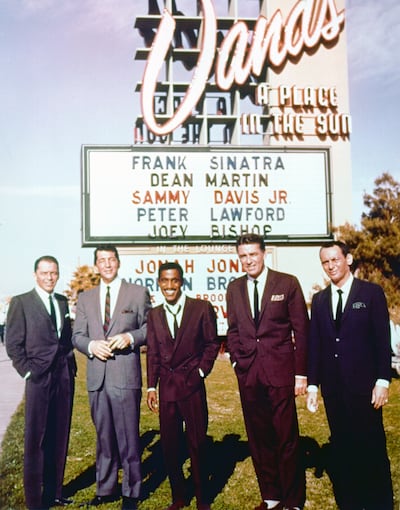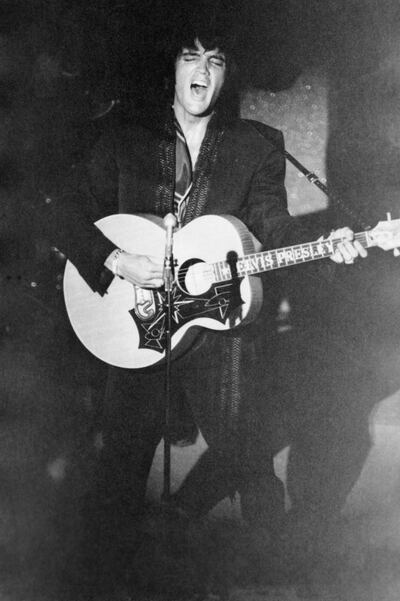For musicians, Vegas was once the place careers went to die and former chart-toppers ended their days singing in cheesy lounge bars on the Strip.
Now, having played host to concert residencies from Britney Spears, Maroon 5 and Drake over the past few years, it has become one of the top places in the world for stars to perform.
Adele is the latest superstar to call Vegas her temporary home thanks to her two-part, five-month run at The Colosseum at Caesars Palace, for which she was reportedly paid $240 million.
However, it hasn't always been that way. Here's what's behind the recent revival and how it all began.
Liberace, the first residency

The American singer and pianist Liberace is widely credited with being the first performer to establish a Vegas residency.
Famous for his ornate outfits, elaborate stage shows and flamboyantly luxurious lifestyle, the piano prodigy dubbed “Mr Showtime” first played in Vegas in 1944.
Ten years later, Liberace was offered his own show at the Riviera Hotel and Casino for a then-record-breaking $50,000 a week. When he later returned to Vegas in the 1980s, towards the end of his career, he commanded $300,000 per week.
The Rat Pack era

While Liberace paved the way for what performers could get paid in Sin City, it was the Rat Pack who ushered in a new era of cool in the 1950s and '60s.
Frank Sinatra, Dean Martin, Sammy Davis Jr, Peter Lawford and Joey Bishop regularly visited Vegas for long weekends to relax by the pool and escape the Los Angelesd paparazzi.
Choosing the city as the location for filming the original Ocean's 11 in 1960, their presence culminated in one of Vegas’s most legendary performances, The Summit at the Sands.
The Rat Pack hit the stage at the Sands Hotel and Casino in January and February 1960, attracting more than 34,000 visitors.
Elvis enters the building

The king of rock 'n' roll became synonymous with Vegas, but it was only in his later career that he enjoyed success in the city.
Elvis’s debut onstage at the New Frontier Hotel and Casino in April 1956 was a resounding flop. At the time, Vegas was popular with families and an older crowd who were a far cry from the screaming teenagers who had recently propelled Heartbreak Hotel to the top of the US charts.
Filming Viva Las Vegas in the city in 1963, and marrying Priscilla Beaulieu at the Aladdin Hotel in 1967, Elvis’s relationship with Vegas was immortalised with his much-touted comeback at the Las Vegas International Hotel in July 1969, which set a record with 101,500 people attending the show’s four-week run.
Owing to the success of the shows, Elvis signed a residency deal to return twice a year over the next five years, and the hotel, now called the Las Vegas Hilton, created the 5,000 square foot Elvis Suite on the 30th floor for him to stay in.
Performance purgatory
While Elvis’s comeback was a success, it cemented in the idea that Vegas was where stars went for a final pay day in the winter of their careers.
Caesars Palace vice president Kurt Melien previously told the Daily Telegraph that Sin City was “the place where singers went to die, where they could earn a crust in their twilight years entertaining tourists".
The counterculture movement of the 1960s and '70s caused a shift in societal and cultural tastes. The Beatles, The Rolling Stones, Woodstock, the anti-Vietnam War movement, hippy and mod culture all combined to usher in the new era in which big festivals and intimate gigs were in and the garish lights of Vegas were out.
“There used to be a certain element of cheesiness to playing in Vegas,” music journalist Jim Farber previously told Marketwatch. “I talked to Cher about that, and she referred to it as an 'elephant graveyard where talent goes to die' — and she was speaking of herself.”
Celine Dion creates the modern Vegas residency

Canadian singer Celine Dion is widely credited as the performer who revitalised Vegas’ appeal to musicians.
For Dion’s A New Day residency, which ran for five years from 2003, Caesars Palace built the singer her own theatre, The Colosseum, and paid her $100 million, plus 50 per cent of the profits.
The show was an instant success, grossing more than $385 million as more than three million people watch her perform across 717 shows.
"Celine was a pioneer without question," Melien said. "Twenty years ago, we couldn't have got someone the stature of Britney Spears to appear in Vegas. Stars like her would never have considered it if Celine hadn't paved the way. She changed the face of modern Vegas.”




